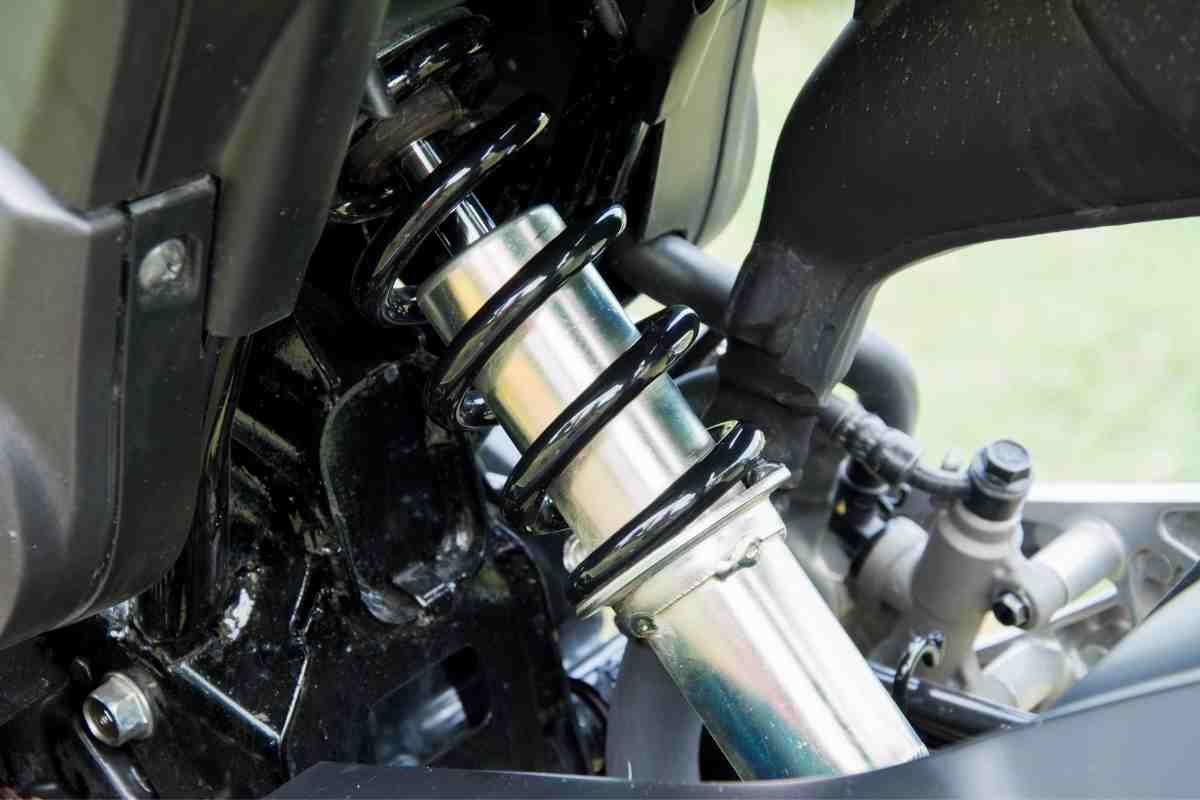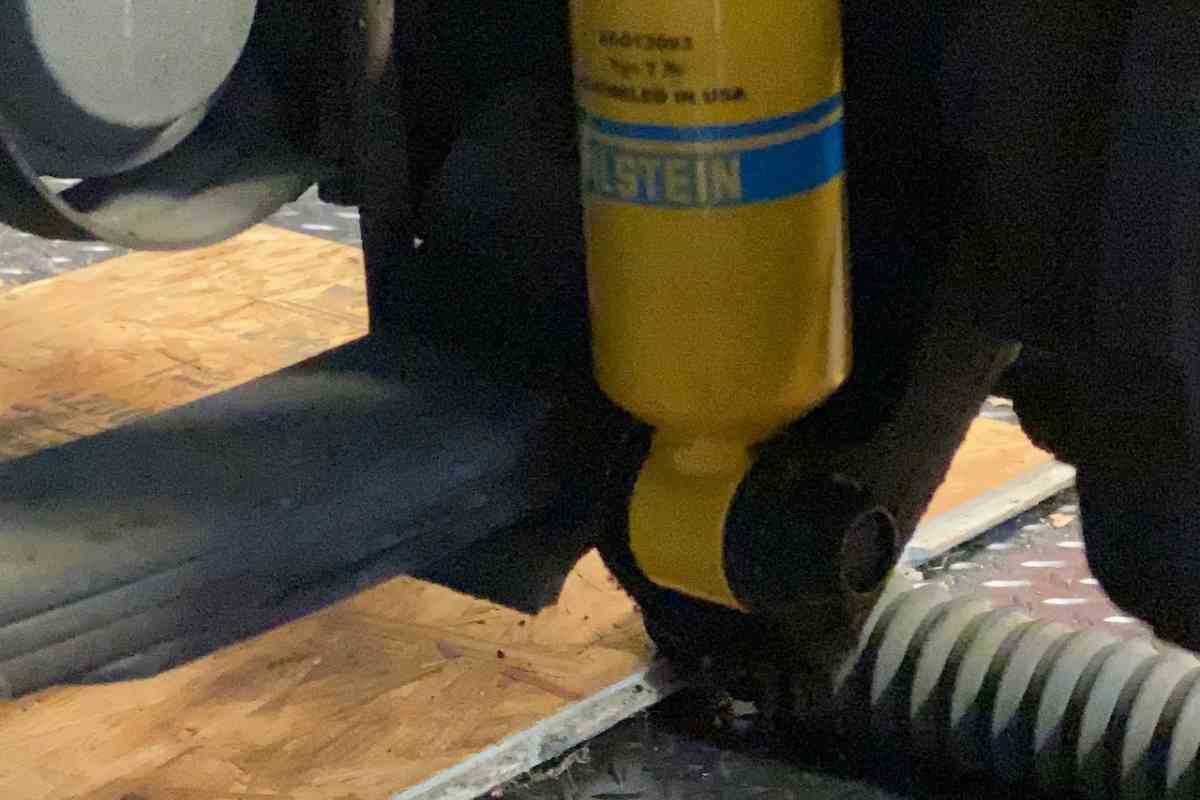Can You Lift A Truck With Just Shocks?

With trucks, one of the first things you think of is more ground clearance. There’s nothing better than knowing that your ride can cross the harshest terrains without scraping the belly. But lifting a truck can be expensive, so you might hear many say that just the shocks will help you raise your ride. Is that true? Let’s find out.
Can You Lift a Truck With Just Shocks?
Standard shocks without specialized gas will not lift a vehicle. Shocks that use high-pressure nitrogen could provide about half an inch, but this is a side consequence and not the primary objective. There are other common myths regarding shocks that we’ll cover in this article.
When you’re looking to increase ground clearance, you need to elevate the frame from the ground. The best way to about lifting a truck is using a lift kit, which comes with all the necessary parts to ensure a good job.
Since the suspension connects the tires to the truck, it’s through this that you can raise it. Shocks are only a part of the entire system. Other elements you need to change to get more inches off the ground include control arms, springs, and spacers.
So, if you’re considering lifting your car, don’t rely solely on shocks. In the next section, we’ll discuss where the myth comes from.
Why do people say you can lift a truck with just shocks?
There are two vital components to suspension, which are springs and shocks. They work in opposite ways, but both help in mitigating the impact on the car.
The shock is always at constant pressure so that it helps the tire stick to the ground. The spring, on the other hand, helps absorb irregularities by compressing.
So, it makes perfect sense that if you were to have a longer shock, then your truck would be farther up from the ground. But, the shocks themselves aren’t strong enough to keep the truck lifted.
Some shocks come with pressurized gas, which makes them stronger and can last for more extended periods.
Ironically, these new or high-pressure shocks lift about half an inch because they come with the highest pressure available. So, what you’re actually seeing in this situation isn’t that you raised the truck but that the shocks are new.

In fact, you can adjust some shocks to be longer, but this isn’t ideal. It’s the same as if you were pushing the shocks to the limit and keeping them there.
You can say the same about torsion bars. Most trucks come with a torsion bar suspension system. It’s rugged and works excellent for heavier vehicles. In principle, a bar connects with the suspension components on both the left and right sides.
One side lifts (for example, going over a rock), and the bar rotates, offering resistance and helping the tire stay on the ground. But, at the same time, since it’s connected to the other side, the torsion will help push the other side down as well.
Torsion bars are adjustable through a bolt. By turning it clockwise, you can increase the amount of load it will handle. What you’re doing here is basically tightening up the bar, which tenses it and raises the vehicle up to 1.5″. But, don’t exceed tension as the bar could suffer fatigue and damage.
This solution can quickly help you fit a bigger tire. But, by tightening the bar, you can also shorten its lifespan.
So, now that we’ve seen that just fitting new shocks, adjusting them, or fiddling with the torsion bar won’t lift your truck, let’s find out what will.
What are lift kits?
To lift a truck safely, you need to increase the length in which the suspension can stretch. This is called travel.
Increasing suspension travel allows for trucks to handle challenging terrain with more ease. Not only does the vehicle have more clearance, but the suspension helps the axles stay on the ground in steeper inclines (this is called articulation).
A suspension lift kit creates space underneath the vehicle. It uses longer shocks, bigger springs, and spacers to create distance between the body and the suspension. Since most of the lifts aim to improve offroad performance or looks (instead of work), these springs are softer.
So, you might feel a change in the handling on highway conditions, as the truck can become bouncy. How much you increase the suspension depends on the kit. Starter kits usually add 1″ to 2″.
More expensive kits can increase up to 3″ or even 4″. Installing these is relatively easy.
But, you might not want to lift the entire truck, just the body. This is ideal for fitting bigger tires. That’s where a body lift kit comes in.
Share Your Insights With US
Did we forget something, get something right (or wrong)? We’d love to hear your insights! Share your automotive experiences based on our article in the comments below. Your input enriches our community’s knowledge. Thanks in advance for sharing!
What is a body lift kit?
As its name states, this option lifts the body from the frame. So, the wheel well is wider. Now, it’s important to highlight that some of these kits do not increase the suspension travel.
But if you want to increase your ride’s height considerably, you need a combination of a suspension and body lift kit. This allows for up to 7″ but affects handling and compromises stability at high speeds.
And that’s precisely what we want to talk about in the next section.
![Can You Lift A Truck With Just Shocks? 3 Best Shocks For A Smooth Riding Stock Jeep Wrangler [YJ, TJ, JK, and JL]](https://fourwheeltrends.com/wp-content/uploads/2020/03/2-1-1024x683.jpg)
What are some drawbacks to lifting a truck?
Lifting a truck is ideal for fitting bigger tires. You can also do this for looks, as nothing beats an imposing look on the road. With the added space, you ensure that the tires won’t rub against the body, which causes uneven wear and damage.
But lifting a truck also has its set of drawbacks. Like all modifications, you’re altering the manufacturer’s specs from how the vehicle came out of the factory. Some aspects of the performance will change.
The first, and most important aspect, is that your altering the center of gravity. A center of gravity is the average location of the truck’s weight. So, the closest it is to the ground, the more stable a vehicle is.
When you lift the suspension, you raise the center of gravity farther from the ground. This, in turn, makes the vehicle more unstable in corners and during braking. Lifted trucks may take longer to stop in emergency situations.
The second most crucial drawback of lifting a truck regards the wear on components such as the transmission.
The engine moves the wheels through a determined set of gears called the transmission. Connecting these are shafts that come out at a certain angle.
But, when you lift a truck, these angles change. So much so that they can come in contact with the frame. When shafts begin rubbing against the body, the friction and vibration increase and can shorten the transmission’s lifespan.
Finally, if you choose to lift your ride by adjusting the shocks or the torsion bar, you’re compromising your vehicle in two ways.
Firstly, you’re forcing these elements past their ideal operating conditions. So, it’s likely that they will last less. Chances are that if you go offroading with tensed-up shocks and torsion bars, they’ll break.
Also, your truck won’t have the same responsiveness as before. This might seem normal in ordinary driving but could worsen in highway situations or offroading.
Related Reading
- Why Are Body Lifts Bad?
- Are Lift Kits Bad For Your Truck?
- Does Lifting a Truck Affect Towing, Payload, or MPG?
- Should I Lift My Truck 4 or 6-Inches?
- Do Lift Kits Affect Miles Per Gallon?
- Do Lift Kits Void A Warranty? Jeep, Chevy, Ford, Ram, Toyota
- What is the Difference Between a Lift Kit and Leveling Kit?
- Is It Okay to Lift a 2WD Truck?
- Can You Lift A Truck With Just Shocks?
Closing thoughts
Modifying your truck is fun. One of the most popular customizations is lifting the body so that you have more ground clearance. This is ideal for offroading, but there’s also an aesthetic side to it.
But it’s also expensive. Because a proper modification requires a lot of components, from spacers to springs and shocks. Some even have longer control arms to allow the wheels to drop farther.
Not a lot of people have the money to invest in such modifications. Others don’t want to. So, some take shortcuts. But, this isn’t necessarily a good thing.
You might read on forums that you can lift your truck with shocks alone. This isn’t true and, in fact, could damage your shocks and compromise your handling.
While new or pressurized shocks can lift your truck about half an inch, they do so because of the added pressure inside them.
Let’s remember that the shock’s function is to keep the tires on the ground. So, it’s expected for them to “push” up the truck. But, over time, this pressure decreases.
Another strategy some people use is to tense up the torsion bar. In principle, it’s the same effect. By giving this bar more tension, it’s not allowing the body to drop.
But, the downside to these two actions is that the components (shocks and bar) are permanently tense.
It’s basically taking them to the limit and then some more. While most will work in these conditions, they will likely last less than their intended lifespan.
So, if you want to lift your truck, don’t resort to fitting just shocks, or worse, tensing up the ones you already have. It’s best to do these jobs right by installing the necessary components.
